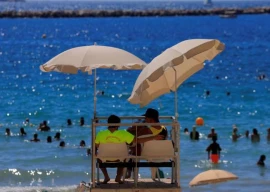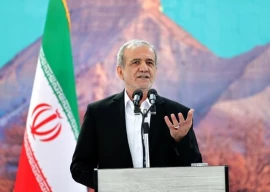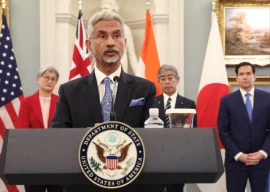
While studying the diagrams of 22 different constellations and maps of known ancient Central American Mayan cities, 15-year-old William Gadoury discovered that they matched the location of 117 Mayan cities scattered throughout Mexico, Guatemala, Honduras and El Salvador.
Customs foil bid to smuggle Buddha statues
 William has named the new city K’aak Chi. PHOTO: CANADIAN SPACE AGENCY
William has named the new city K’aak Chi. PHOTO: CANADIAN SPACE AGENCY“I was really surprised and excited when I realised that the most brilliant stars of the constellations matched the largest Mayan cities,” he told the Journal de Montréal.
Applying his theory to a 23rd constellation, the young boy found that two of the stars already had cities linked to them but that the third star was unmatched.
Scientists have never found such a correlation and were impressed by William’s work.
The lion of Ganga-Jamuna civilisation
“What is fascinating about this project of Williams' is the depth of his research,” said Daniel de Lisle.
“Linking the position of stars and the location of a lost city and the use of satellite images on a tiny territory to identify the remains buried under dense vegetation, is quite exceptional,” the scientist added.
 William took to Google Maps and found that there must be another city hidden in the Yucatan Peninsula of Mexico. PHOTO: CANADIAN SPACE AGENCY
William took to Google Maps and found that there must be another city hidden in the Yucatan Peninsula of Mexico. PHOTO: CANADIAN SPACE AGENCYThe Canadian Space Agency agreed to train its satellite telescopes on the spot and returned with striking pictures of an ancient Mayan pyramid and dozens of smaller structures around it.
Indo-Pak border: Even Google Maps knows not to cross the line
If the satellite photographs are verified, the city would be among the largest Mayan population centers ever discovered.
“It would be the culmination of my three years of work and the dream of my life,” William said. He said he became interested in the Mayans after reading about their predictions that the world would end in 2012.
William acknowledged that since the location of the city lies in an inaccessible and remote area of Mexico, it will be difficult and costly for an archaeological team to reach the city.
"It's always about money. Expedition costs are horribly expensive,” said Dr Armand LaRocque, a specialist at the University of New Brunswick.
William decided to name the new city K’aak Chi, meaning Fire Mouth and hopes to visit it someday.
This article originally appeared on Telegraph.


















COMMENTS
Comments are moderated and generally will be posted if they are on-topic and not abusive.
For more information, please see our Comments FAQ